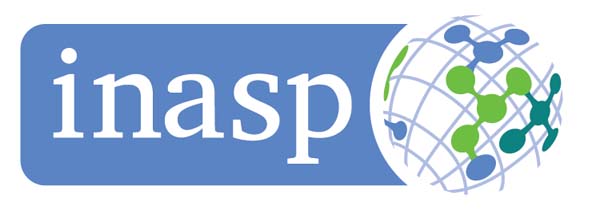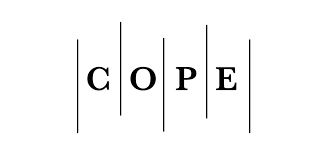A robust CNN Deep Learning and InceptionV3 model Techniques for Enhanced Skin Cancer Detection
DOI:
https://doi.org/10.29304/jqcsm.2024.16.41806Keywords:
Convolutional Neural Network (CNN), HAM10000 dataset, Deep Learning, InceptionV3, Skin CancerAbstract
Skin cancer, a dangerous form of cancer, originates from DNA damage that causes unchecked cell growth, resulting in a rapid rise in its occurrence. Earlier research has explored the application of computerised analysis for detecting malignancy in images of skin lesions. Nonetheless, challenges remain, including complications with light reflections, variations in colour, and the diverse shapes and sizes of lesions. This research explores how deep learning techniques can improve the detection of skin cancer. We developed and meticulously evaluated two models: a custom-built Convolutional Neural Network (CNN) and a tailored InceptionV3 model that was pre-trained and adapted for our needs. Our primary goal with the HAM10000 dataset was to execute binary classification, distinguishing between malignant melanoma and benign nevus. The custom Convolutional Neural Network (CNN), noted for its efficient design, achieved a precision rate of 91.80%, while the more complex adapted InceptionV3 model secured an impressive accuracy of 95.72%. The findings showcased here demonstrate the effectiveness of both tailored and pre-trained deep learning models in identifying skin cancer. This showcases their capability to enhance diagnostic accuracy and efficiency, even when encountering various resource and computing constraints. This study highlights how deep learning can significantly improve the accuracy of skin cancer diagnoses, ultimately leading to better outcomes for patients.
Downloads
References
Ashraf, R.; Afzal, S.; Rehman, A.U.; Gul, S.; Baber, J.; Bakhtyar, M.; Mehmood, I.; Song, O.Y.; Maqsood, M. Region-of-Interest Based Transfer Learning Assisted Framework for Skin Cancer Detection. IEEE Access 2020, 8, 147858–147871.
Byrd, A.L.; Belkaid, Y.; Segre, J.A. The Human Skin Microbiome. Nat. Rev. Microbiol. 2018, 16, 143–155.
Elgamal, M. Automatic Skin Cancer Images Classification. IJACSA 2013,
Key Statistics for Melanoma Skin Cancer. Am. Cancer Soc. Available online: https://www.cancer.org/content/dam/CRC/PDF/ Public/8823.00.pdf (accessed on 8 February 2021).
Khan, M.Q.; Hussain, A.; Rehman, S.U.; Khan, U.; Maqsood, M.; Mehmood, K.; Khan, M.A. Classification of Melanoma and Nevus in Digital Images for Diagnosis of Skin Cancer. IEEE Access 2019, 7, 90132–90144.
Premier Surgical Staff. What Is the Difference between Melanoma And non-Melanoma Skin Cancer? PSS. Available online: https://www.premiersurgical.com/01/whats-the-difference-between-melanoma-and-non-melanoma-skin-cancer/ (accessed on 6 February 2021).
Rashid, H.; Tanveer, M.A.; Aqeel Khan, H. Skin Lesion Classification Using GAN Based Data Augmentation. In Proceedings of the 2019 41st Annual International Conference of the IEEE Engineering in Medicine and Biology Society (EMBC), Berlin, Germany, 23–27 July 2019; pp. 916–919.
Bisla, D.; Choromanska, A.; Stein, J.A.; Polsky, D.; Berman, R. Towards Automated Melanoma Detection with Deep Learning: Data Purification and Augmentation. arXiv 2019, arXiv:1902.06061. Available online: http://arxiv.org/abs/1902.06061 (accessed on 10 February 2021).
Farag, A.; Lu, L.; Roth, H.R.; Liu, J.; Turkbey, E.; Summers, R.M. A Bottom-Up Approach for Pancreas Segmentation Using Cascaded Superpixels and (Deep) Image Patch Labeling. IEEE Trans. Image Process. 2017, 26, 386–399.
Xie, F.; Fan, H.; Li, Y.; Jiang, Z.; Meng, R.; Bovik, A. Melanoma Classification on Dermoscopy Images Using a Neural Network Ensemble Model. IEEE Trans. Med. Imaging 2017, 36, 849–858.
Masood, A.; Al-Jumaily, A.A.; Adnan, T. Development of Automated Diagnostic System for Skin Cancer: Performance Analysis of Neural Network Learning Algorithms for Classification. In Artificial Neural Networks and Machine Learning–ICANN 2014; Wermter, S., Weber, C., Duch, W., Honkela, T., Koprinkova-Hristova, P., Magg, S., Palm, G., Villa, A.E.P., Eds.; Lecture Notes in Computer Science; Springer International Publishing: Cham, Switzerland, 2014; Volume 8681, pp. 837–844.
Transtrum, M.K.; Sethna, J.P. Improvements to the Levenberg-Marquardt Algorithm for Nonlinear Least-Squares Minimization. arXiv 2012, arXiv:1201.5885. Available online: http://arxiv.org/abs/1201.5885 (accessed on 24 January 2021).
Al-Naima, F.M.; Al-Timemy, A.H. Resilient Back Propagation Algorithm for Breast Biopsy Classification Based on Artificial Neural Networks. In Computational Intelligence and Modern Heuristics; Ali, A.-D., Ed.; InTech: Shanghai, China, 2010; Available online: https://www.intechopen.com/books/computational-intelligence-and-modern-heuristics/resilient-back-propagationalgorithm-for-breast-biopsy-classification-based-on-artificial-neural-net (accessed on 20 January 2021).
Møller, M.F. A Scaled Conjugate Gradient Algorithm for Fast Supervised Learning. Neural Netw. 1993, 6, 525–533.
Srividhya, V., Sujatha, K., Ponmagal, R., Durgadevi, G., Madheshwaran, L., et al. (2020). Vision based detection and categorization of skin lesions using deep learning neural networks. Procedia Computer Science, 171, 1726–1735.
Hoshyar, A. N., Al-Jumaily, A., & Hoshyar, A. N. (2014). The beneficial techniques in preprocessing step of skin cancer detection system comparing. Procedia Computer Science, 42, 25–31.
Kadampur, M. A., & Al Riyaee, S. (2020). Skin cancer detection: applying a deep learning based model driven architecture in the cloud for classifying dermal cell images. Informatics in Medicine Unlocked, 18, Article 100282.
Hasan, M., Barman, S. D., Islam, S., & Reza, A. W. (2019). Skin cancer detection using convolutional neural network. In Proceedings of the 2019 5th international conference on computing and artificial intelligence (pp. 254–258).
Li, Y., & Shen, L. (2018). Skin lesion analysis towards melanoma detection using deep learning network. Sensors, 18(2), 556.
Tschandl, P., Rosendahl, C., Akay, B. N., Argenziano, G., Blum, A., Braun, R. P., et al. (2019). Expert-level diagnosis of nonpigmented skin cancer by combined convolutional neural networks. JAMA Dermatology, 155(1), 58–65.
Saba, T., Khan, M. A., Rehman, A., & Marie-Sainte, S. L. (2019). Region extraction and classification of skin cancer: A heterogeneous framework of deep CNN features fusion and reduction. Journal of Medical Systems, 43(9), 289.
Jafari, M. H., Karimi, N., Nasr-Esfahani, E., Samavi, S., Soroushmehr, S. M. R., Ward, K., et al. (2016). Skin lesion segmentation in clinical images using deep learning. In 2016 23rd international conference on pattern recognition (ICPR) (pp. 337–342). IEEE.
Le, D. N., Le, H. X., Ngo, L. T., & Ngo, H. T. (2020). Transfer learning with classweighted and focal loss function for automatic skin cancer classification. arXiv preprint arXiv:2009.05977.
P. Tschandl, C. Rosendahl, H. Kittler, The HAM10000 dataset, a large collection of multi-source dermatoscopic images of common pigmented skin lesions, Sci. Data (2018).
H. Perez, J. H. M. Tah, and A. Mosavi, “Deep learning for detecting building defects using convolutional neural networks,” Sensors, vol. 19, no. 16, p. 3556, 2019.
Adjed, F., Faye, I., Ababsa, F., Gardezi, S. J., & Dass, S. C. (2016, November). Classification of skin cancer images using local binary pattern and SVM classifier. In AIP Conference Proceedings (Vol. 1787, No. 1).
Huang, A., Chang, W. Y., Liu, H. Y., & Chen, G. S. (2012, May). Capillary detection for clinical images of basal cell carcinoma. In 2012 9th IEEE International Symposium on Biomedical Imaging (ISBI) (pp. 306-309). IEEE.
Pham, T. C., Tran, G. S., Nghiem, T. P., Doucet, A., Luong, C. M., & Hoang, V. D. (2019, July). A comparative study for classification of skin cancer. In 2019 International Conference on System Science and Engineering (ICSSE) (pp. 267-272). IEEE.
Hekler, A., Utikal, J. S., Enk, A. H., Hauschild, A., Weichenthal, M., Maron, R. C., ... & Thiem, A. (2019). Superior skin cancer classification by the combination of human and artificial intelligence. European Journal of Cancer, 120, 114-121.
Downloads
Published
How to Cite
Issue
Section
License
Copyright (c) 2024 Bahaa Salih Mandeel, Manar Raad Abdalhassan, Diyaa Kareem Abd-Alhmza, Muhtadi Thamer Mousa Raad

This work is licensed under a Creative Commons Attribution-NonCommercial-NoDerivatives 4.0 International License.













